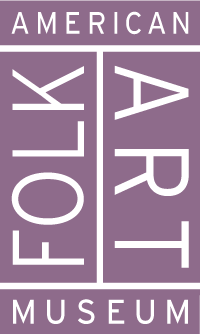NEW YORK, May 7, 2025 – This fall, the American Folk Art Museum will present a groundbreaking exploration of the natural history of American textiles, drawing from the Museum’s rich collection of more than 600 quilts, which will propose an eco-critical inquiry into the many facets of global material culture that emerged in the early American republic through the 20th century. This exhibition will examine the ecological and social consequences of agricultural production, industrial manufacture, and international distribution networks, all of which allowed quiltmaking to flourish as a quintessential American art form.
Curated by Emelie Gevalt, the American Folk Art Museum’s Deputy Director and Chief Curatorial & Program Officer, and Austin Losada, Art Bridges Fellow, An Ecology of Quilts: The Natural History of American Textiles (September 26, 2025 – March 1, 2026) brings together approximately 30 examples, spanning the 18th to 20th centuries, from the Museum’s renowned quilt collection and presents them from an ecological perspective, tracing patterns of relationships between the environment and traditional quilting practices. Looking beyond the quiltmaker, An Ecology of Quilts is centered around the origins of textile production and how it informs the artistry of quiltmaking, exploring the environmental and social impact of cultivating and harvesting raw materials; the networks of overland and ocean trade required to transport dyestuffs, fibers, and fabrics; and the technologies and industrial techniques developed to process them, such as the cotton gin.
As An Ecology of Quilts documents, textiles represent an intricately woven web of environmental resources, craft and scientific knowledge, global movement, and creative collaboration. Speaking not only to the work of individual American quilters but also to the contributions of countless artisans and laborers around the globe, quilts survive as powerful material metaphors for human relationships and entanglements within the natural world.
Jason T. Busch, Becky and Bob Alexander Director & CEO, commented: “The American Folk Art Museum has a well-earned reputation as a leading center for the study of quilts, having presented many celebrated and popular exhibitions in our history. The bold vision of An Ecology of Quilts, however, places American quilts and textile production in a light rarely explored before in such depth and detail. The breadth and diversity of artisans on display is a testament to how understanding the ecological impact of historical textiles can unlock new knowledge about our shared histories and environments.”
Emelie Gevalt, Deputy Director and Chief Curatorial and Program Officer, remarked: “Quilting is often seen as a recycling project, taking up cast-off scraps and infusing them with new life. However, this is only one way to interpret quilts’ materiality and their histories. The impetus for this exhibition was to approach quiltmaking from a unique perspective, taking a closer look behind the scenes, as it were, at the market and environmental conditions that allowed textile artists to innovate the medium for centuries. But at what cost? That is a major question at the center of the exhibition, as the intersection between the natural and manufactured worlds is stitched into the surfaces of these quilts themselves.”
Divided into sections that explore themes of color, fiber, and pattern, An Ecology of Quilts introduces visitors to histories of natural and synthetic dyes and their complex, often toxic production; the manufacture of fabrics from natural fibers including wool, cotton, linen, and silk; the origins and artisanship of printed motifs and patterns; the global trade and importation of goods; and the importance of local ecological knowledge and quilters’ historical engagement with the natural world.
Among the examples treated in depth is the use of the indigo plant as one of the major historical dye sources for textile production. For a period in the 18th century, indigo cultivation surged in British American South Carolina, where it was a major cash crop–even sometimes referred to as “blue gold”–though, production depended on enslaved labor. While synthetic sources of blue became popular in the 19th century, recent renewed interest in natural dyes had led to an indigo revival and more eco-friendly techniques.
Printed patterns, such as chintz, are also explored at length, as the availability of new patterns, fabrics, and designs brought new energy to the American textile market in the 18th and 19th centuries thanks to new technologies and increased trade. The demand for floral compositions like chintz speaks to the universal appeal of botanical design, even while their mass production moved away from the traditional approaches in favor of mechanized processes.
An Ecology of Quilts also highlights the range of individuals and communities who participated in quiltmaking and textile production, showcasing the diversity and ubiquity of quilting and the variations it produced as an artform. Among the many skilled artisans represented throughout the exhibition features examples by: Malissia Pettway, one of the celebrated quilters of Gee’s Bend, Alabama, among many other woman artisans showcased; Dr. Raymond F. Bellamy, a retired Florida sociologist; an early 20th century tailor in St. Louis who salvaged men’s suiting woolens into a knotted brick pattern quilt; and contemporary textile artist Tomie Nagano. The exhibition also includes examples of quilting and textile traditions originating in Hawaii and Oaxaca, Mexico.
About the American Folk Art Museum
Founded in 1961, the American Folk Art Museum is a global leader dedicated to the preservation and promotion of folk and self-taught art across time and place. Candid, genuine, and unexpected, the Museum celebrates the creativity of individuals whose singular talents have been refined largely through personal experience rather than formal artistic training. With a collection spanning 7,500 works of art from four centuries and nearly every continent, the American Folk Art Museum engages people of all backgrounds through its collections, exhibitions, publications, and public programs as the leading forum shaping the understanding and appreciation of folk and self-taught art. Thanks to the generous support of our members, patrons, and donors, admission to the Museum is always free. In 2025, AFAM was voted #1 in Newsweek’s Best Art Museum readers’ choice poll.
